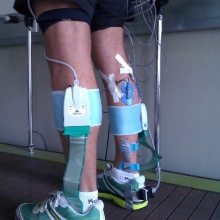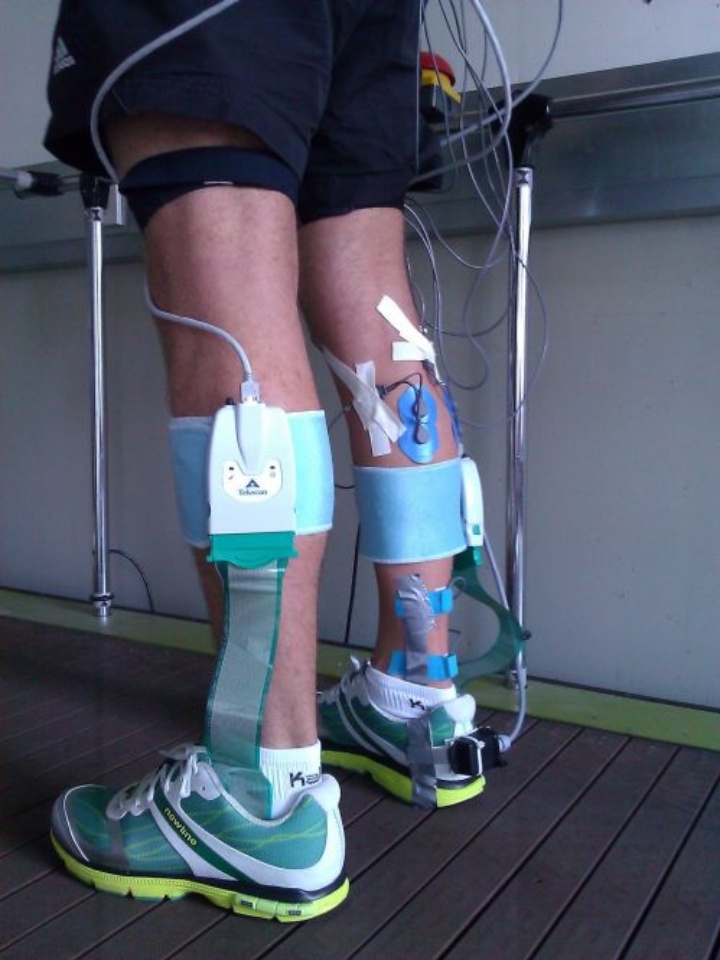Sport injuries through running are extremely unpleasant. Those concerned often only notice too late when they are causing inappropriate mechanical stress through unfavourable movements. Researchers at the Institute of Sport and Movement Science (Inspo) at the University of Stuttgart are therefore working together with the Test and Research Institute Pirmasens (PFI) on developing a “smart shoe“ with sensors able to warn directly beforehand, while the person is running.
Prof. Wilfried Alt from Inspo explained: “Our part in this is investigating what has to be
measured on and in the shoe to signal the strain.“ His department is researching which
inappropriate mechanical stresses are dependent on the individual joint anatomy. For example and
among other things, the speed is measureable with which the ankle moves and what effect this has on
the Achilles tendon. This should also be possible at a later stage in the smart shoes.
At present pilot measurements are being performed in the biomechanics laboratory – in the
truest sense of the word, since various tools are attached to various runners by cables and then
they start running. “The tools, however, are still much too big“, explained Alt. The necessary
sensor technology has indeed been matured, yet the electronic components at present are much too
big and heavy to be integrated in a shoe. Another problem is the necessary service life and
robustness to cope with the many steps.
The Stuttgart researchers send their measurement data to the partners from Pirmasens. They
miniaturise the necessary sensor technology and then produce a measuring shoe according to the uni
specifications. “The runner should not notice the additional weight“, explained Alt. The
sportspeople now start running long distances in their shoes and measurements are taken again. The
aim is to ultimately get a prototype that can then be used for sportspeople but also in
rehabilitation clinics in as individual a way as possible.
It is also conceivable to show strains on a display. In addition the measurements can be
extended to other body parts, such as knees or hips. And Alt is also thinking further ahead since
the shoe is not only able to warn. Due to the measurement results it would be possible that a
special material and its mechanical features could be changed inside in such a way that the strain
is reduced. However, this is still in the “distant future”, he said. The steps for the initial
pilot shoes with this technology are much closer.
Further information:
Prof. Dr. Wilfried Alt, Institute of Sport and Movement Science (Inspo) at the University of
Stuttgart, Tel. 0711-685-63186, Email: wilfried.alt(at)inspo.uni-stuttgart.de



